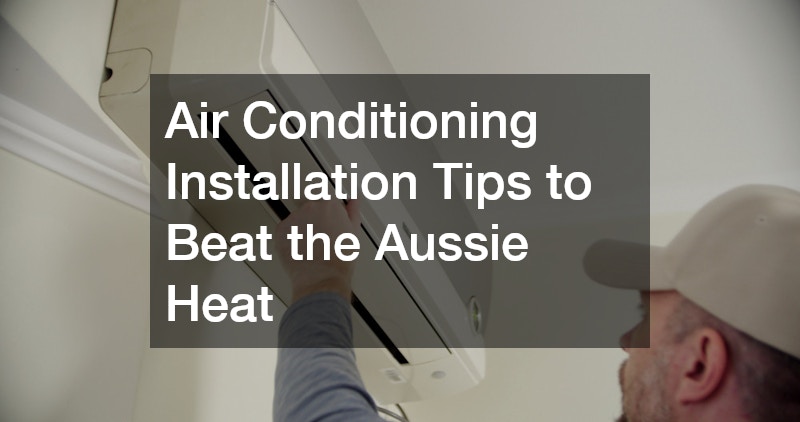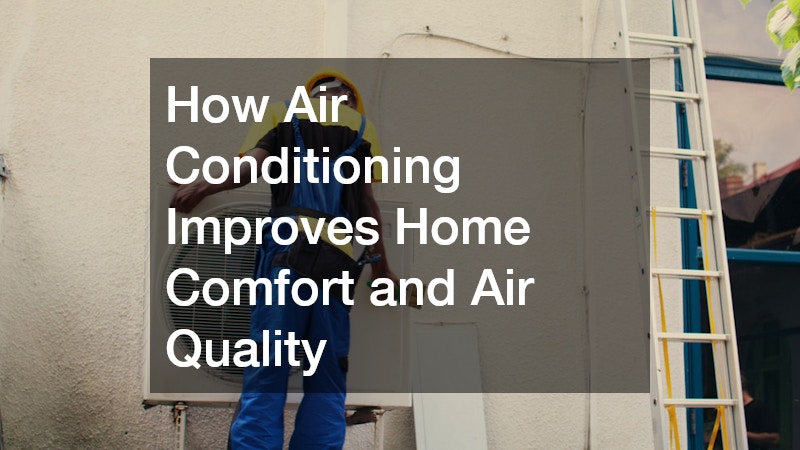When summer hits Australia, temperatures can soar to uncomfortable levels, making a reliable air conditioning system a necessity rather than a luxury. With such extreme heat, ensuring your air conditioning installation is done correctly can be the difference between comfort and chaos. Whether you’re upgrading an old system or installing one for the first time, these practical tips will help you make the right decisions and keep your home cool all summer long.
Choosing the Right System for Your Space
The first step is selecting a system that suits your home’s size, layout and insulation. Not all air conditioners are created equal—what works for a small apartment in Melbourne won’t necessarily suit a two-storey family home in Brisbane.
Split systems are ideal for cooling individual rooms or small spaces, while ducted systems offer whole-house cooling. It’s important to calculate the right cooling capacity (measured in kilowatts) for the area you want to cool. Oversized systems may lead to higher energy bills and frequent cycling, while undersized units will struggle to maintain a comfortable temperature.
Professional Installation is Key
DIY might be tempting, especially for the budget-conscious, but installing air conditioning is not a task to take lightly. In Australia, only licensed professionals can install or replace air conditioning systems legally. This ensures the installation complies with Australian standards, including proper electrical and refrigerant handling, both of which are critical for safety and efficiency.
Hiring a licensed installer also gives you access to warranties, ongoing support and advice on system placement and maintenance. Look for technicians accredited by the Australian Refrigeration Council (ARC) to ensure your unit is installed properly and sustainably.
Optimal Placement for Efficiency
Where your unit is installed plays a major role in its performance and energy consumption. For split systems, the indoor unit should be placed high on a wall in a central location with good airflow, away from direct sunlight or heat-producing appliances. The outdoor compressor should be installed in a shaded, well-ventilated area to prevent overheating.
If you’re opting for a ducted system, ductwork should be strategically placed to ensure even cooling across all rooms and insulation around ducts is vital to prevent energy loss. Proper placement not only maximises efficiency but also extends the lifespan of your air conditioning unit.
Consider Smart Technology & Zoning
Modern air conditioning systems offer advanced features like programmable thermostats, smartphone control and zone-specific cooling. Zoning allows you to cool only the rooms that are in use, significantly reducing energy consumption. Smart systems can also adjust temperatures automatically based on external conditions, helping you save money and maintain comfort effortlessly.
When planning your installation, ask your technician about these smart features. Integrating them from the outset can reduce future upgrade costs and align your system with emerging energy standards.
Don’t Forget Insulation & Sealing
Even the best air conditioning installation will be ineffective if your home isn’t properly insulated. Poor insulation means your unit will have to work harder to maintain the desired temperature, increasing wear and tear and raising energy costs.
Check for gaps around doors and windows, add weather stripping where needed and ensure ceilings and walls are adequately insulated. Double-glazed windows and external shading such as awnings or shutters can also reduce heat load and improve overall efficiency.
Maintenance Matters
After the air conditioner is installed, regular maintenance is essential. Clean or replace filters every three months, check outdoor units for debris and schedule professional servicing at least once a year. This keeps your system running at peak performance and helps identify minor issues before they become major, expensive repairs.
Blocked filters and dusty coils reduce airflow and make your system work harder, increasing energy usage and shortening the unit’s life. Simple maintenance steps can lead to long-term savings and a cooler home.
Plan for Peak Demand Periods

The demand for air conditioning installation tends to skyrocket during the warmer months, particularly in late spring and early summer. If possible, plan your installation in autumn or winter to avoid delays and higher costs. Installers often offer off-season discounts and you’ll have your system ready before the first heatwave hits.
Beating the Aussie heat isn’t just about buying the most expensive unit on the market. A successful installation takes planning, professional advice and attention to detail. From choosing the right system to optimising placement and ensuring regular maintenance, these steps will help you stay cool, comfortable and energy-efficient all summer long.
Whether you’re in the humid tropics of Queensland or the dry heat of South Australia, following these tips will ensure your air conditioner delivers lasting comfort and value.


